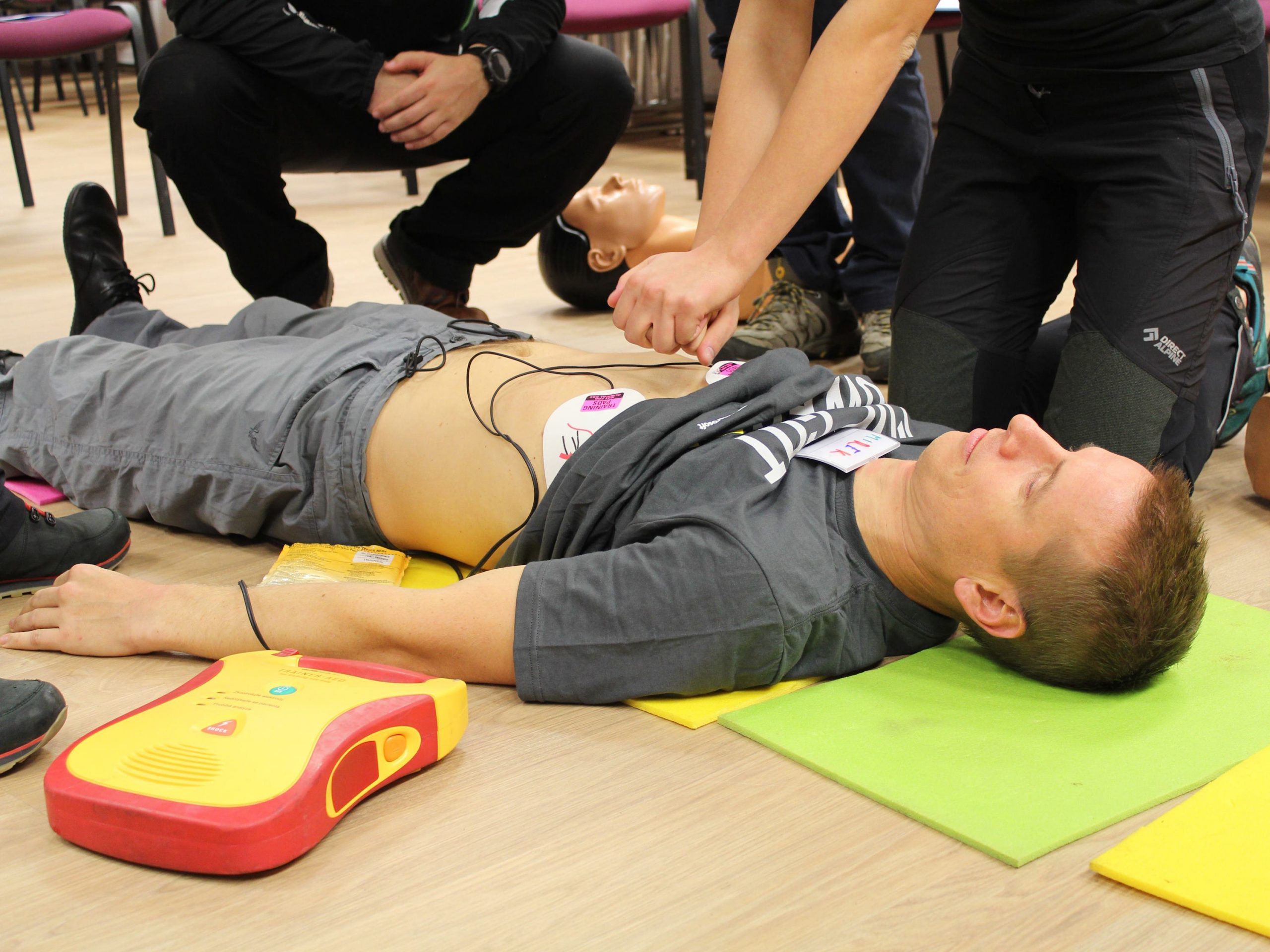Hands-only CPR, also known as compression-only CPR, is a method of cardiopulmonary resuscitation (CPR) that focuses solely on chest compressions without the incorporation of rescue breaths. It’s designed to simplify the process of CPR for untrained bystanders in case of an emergency. The American Heart Association (AHA) recommends hands-only CPR in certain situations, particularly for adults who suddenly collapse in an “out-of-hospital” setting. Here’s a brief guide on how to perform it:
- Check the Scene and the Person: Ensure the scene is safe before approaching the person. Check if the person is responsive by shouting at them and shaking their shoulder gently. If there is no response and the person is not breathing or only gasping, call for emergency medical services (if you’re alone, use a mobile phone on speaker mode so you can continue to assist the person).
- Position Your Hands: Place the heel of one hand on the center of the person’s chest (on the lower half of the breastbone). Place your other hand on top of the first hand, interlocking your fingers.
- Start Chest Compressions: Keep your elbows straight and position your shoulders directly above your hands. Use your body weight to help you administer compressions that are at least 2 inches (5 cm) deep, but not more than 2.4 inches (6 cm), at a rate of 100 to 120 compressions per minute. The AHA suggests compressing to the beat of a familiar song that matches this tempo, like “Stayin’ Alive” by the Bee Gees.
- Continue Compressions: Keep performing chest compressions until professional help arrives or an automated external defibrillator (AED) is available and ready to use. If you become exhausted, try to find someone else to take over compressions.
Hands-only CPR has been shown to be as effective as conventional CPR (which includes breaths) in the first few minutes after a sudden cardiac arrest in adults. This method is not recommended for infants or children, victims of drowning, drug overdose, or people whose cardiac arrest is due to respiratory problems. In those cases, conventional CPR with breaths is more appropriate.
The simplicity of hands-only CPR increases the likelihood that bystanders will take action in an emergency, which can significantly improve the survival rates of individuals experiencing cardiac arrest outside of a hospital setting.

